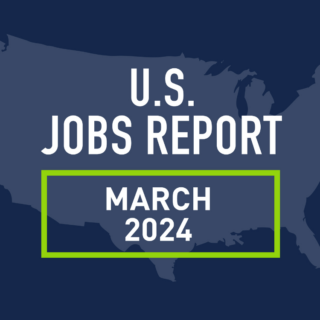On a sleepy Saturday morning, you grab your laptop and spend two hours applying to your dream job. It’s worth the extra cup of coffee because you like this role and company enough to ignore the annoyance of a long application. Finally, you submit your application. An instant later, you receive a reply in your inbox. “We regret to inform you that, after careful review, you are no longer being considered for this role.”
Maybe that PowerPoint proficiency question you skipped was a disqualifier? With such a general response, it’s hard to know. In the modern candidate’s world, rigid automation rules that lead to a message like the one above rarely make sense. According to the Society for Human Resource Management (SHRM), 82% of candidates report the ideal recruiter interaction is a mix between innovative technology and personal, human interaction. Employers should be on notice, too, as 72% of candidates who have a poor experience share it online, according to the Human Capital Institue.
In this article, we’ll define what automation is, the overall benefits of it, and specific examples of what to do and not do as the use of automation in talent acquisition grows.
What is Automation?
Automation is not new, but it is rapidly evolving. In the industrial revolution, for example, local weavers were replaced by machines that could perform the same tasks in factories. This was an example of a manual task that was replicated into a process and automated. At its most basic definition, automation is:
“The technique of making an apparatus, a process or a system operate automatically.”
– Merriam Webster
What, then, is the relationship between automation and artificial intelligence (AI)? The two terms are sometimes confused and used interchangeably, but AI is defined as:
“ … the simulation of human intelligence in machines that are programmed to think like humans and mimic their actions.”
– Investopedia
Types of AI include machine and deep learning. Machine learning involves computers that learn without being explicitly programmed; an example of this is sentiment analysis, in which computers make decisions about how individuals feel based on their activity on or off line. Deep learning is a subset of machine learning that teaches computers to take the next step and learn in the same way that humans do. For example, machine learning is displayed when a driverless car recognizes a stop sign and stops.
Today, modern automation almost always involves AI. Finding and scheduling candidates via chatbots, for example, is a type of AI-infused automation in the world of talent acquisition. Automation using AI also includes tasks that were neither quantifiable nor automatable five years ago – such as measuring the interest level of passive candidates from social media metrics.
How Does Automation Affect Talent Acquisition?
When designed correctly, the right levels of automation help the recruiter and candidate create a better candidate experience.
Automation affects recruiters and candidates in different ways. For recruiters, automation helps reduce repetitive, administrative tasks – such as manual searching or appointment-setting – to focus more time on meaningful activities, like face-to-face interviews. On the other hand, automation can help make the process feel more personal for candidates through customized attention and added convenience in the job search by reducing the time it takes to apply. As an example, candidates know chatbots aren’t real people, but most appreciate the instant feedback bots give them.
While automation can be a game changer, there is such a thing as too much or the wrong type of automation. Each stage of the recruitment cycle has an “automation opportunity,” as well as an associated risk to the candidate experience; the risk may be low in the case of automating a candidate’s onboarding experience, for example. In comparison, the final stage of the hiring process is rarely automated and instead involves interviews conducted by humans.
The most effective automation tools have one or more of the following attributes:
- Ability to reach candidates in a more meaningful way. With automation, recruiters can have more timely, personalized interactions with candidates. For example, a retail candidate working at a pharmacy can receive email alerts about new roles matching their skills at another pharmacy as soon as the roles are posted.
- Ability to make the hiring process convenient and simple. Long gone are the applications that take two hours to complete. Instead, candidates fill out auto-populated applications catered to their interests and backgrounds in just five to 10 minutes.
- Ability to maximize recruiter productivity. As previously mentioned, automation can complete more manual tasks – such as passive sourcing 24/7 – freeing up more time for recruiters to work on activities that benefit from the human touch.
- Ability to deliver better performance metrics. With more data comes the opportunity to measure it more effectively. The digitization process helps make these metrics part of the recruiter’s ongoing dashboards to measure success.
How to Avoid Candidate Experience Automation Flaws
Automation without the correct supervision can go awry. Consider the programmer who created a social media profile of a fish that was looking for a job. Algorithms took the bait and sent this qualified catfish profile requests for interviews based on keywords and a falsely construed online account. It certainly was fishy.
Here are some common automation mistakes to avoid so you don’t get caught on the hook:
- Putting your automation on auto-drive without ongoing input can create unintended bias. While the catfish profile is a more humorous example, you may recall the case study of what not to do from a leading online retailer. The company was hiring programmers, and while well-intentioned, accidentally built bias into the program based on patterns in its database of résumés from the past 10 years – which were mostly male. The company responded quickly, scrapping the program and retooling its efforts to make its profiles more gender-neutral. These types of mistakes are not only bad for your recruiting process and candidates, but can also create issues for your compliance and legal teams, as well.
- Too much automation can cause candidates to lose interest. This can occur when interactions lack a human element, causing candidates to tune out during the hiring process.
- Too much communication may make candidates disengage. Once a tipping point is reached, it’s hard to come back from a failed interaction; most people have experienced applying to a role and then receiving an influx of unwanted emails. Furthermore, for candidates looking at multiple job opportunities, less personalized forms of communication can create a quick change in interest.
How can these automation flaws be avoided? Test every automation step you incorporate into your hiring process – from both the experience of the recruiter and the candidate – all the way through the candidate journey. Are there any gaps you need to review or hazards you encounter? You can also pilot larger, more disruptive automation with a control group of internal employees to assess results. Make your mistakes up front, fix them, then release to a wider audience. If you think your automation strategies could create biases or a negative hiring experience, stop and retool.
You can also bring your partners along with you on your automation journey. For example, consider establishing an advisory committee to make sure concerns are alleviated, and conduct candidate evaluations to make sure the candidate experience is improved.
When Automation Works
So, when is automation helpful? In addition to eliminating manual tasks and creating time for recruiters to be more strategic, there are five key instances when automation benefits candidates and recruiters.
Automation helps when:
- It enhances the candidate experience. An example of this is sending an email to passive candidates asking them to apply. If this process is automated, the candidate gets an identical email, but the recruiter can focus time on other recruiting activities, instead of sending individual emails to multiple candidates.
- Flexibility or convenience is added to an existing recruiting process. This benefits recruiters by reducing manual work, by using text reminders to the candidate to select and systematically schedule an interview, for example. This way, the hiring manager and the candidate avoid playing phone tag.
- A recruiter can add a personal touch in an automated way. As an example, candidates interested in accounting roles can receive personalized content through career pages and only see positions that apply to their personal skillset when they search.
- High-volume positions create hundreds of applicants with a short interview process, such as during the holiday retail hiring season. Quick “yes” or “no” text screens with lower thresholds can help sort candidates through specific questions, such as availability and hourly salary requirements. Doing so helps bring in a smaller, more qualified applicant set to the interview process.
- Recruiters need to send reminders to a specific group of candidates. For instance, perhaps you want to invite to a hiring event candidates from the Midwest who have engineering degrees. In this case, automation rules can help determine a discrete set of candidates that meet these requirements and then send the alerts on your behalf.
Automation works well in specific parts of the recruiting process, depending on your target hire. For example, high-volume roles benefit from automated sourcing, screening and basic assessments, whereas only automating the search for passive candidates may be necessary for highly skilled roles.
Your Guidelines to the Dos & Don’ts of Automating Your Candidate Experience
Keep these guidelines as you scale your automation rules to meet your talent acquisition goals.
Do:
- Measure, phase in automation and measure again to determine effectiveness.
- Involve everyone in the process to determine where automation makes the most sense.
- Take advantage of A/B testing to help measure different ideas.
- Treat every situation as unique; don’t assume that what works for one will work for another.
- Remember that candidates want a personal touch, and what you don’t automate is as important as what you do.
- Use your people to make critical decisions.
Don’t:
- Proceed if it doesn’t feel like it’s best for your candidates.
- Influence the candidate experience in a negative way.
- Assume that automating your entire hiring process is the right thing for your business.
- Make an automation change and assume it will work forever. Always be reevaluating!
Want to learn more about the positives and negatives of automating your candidate experience? Check out this article’s accompanying webinar here.

